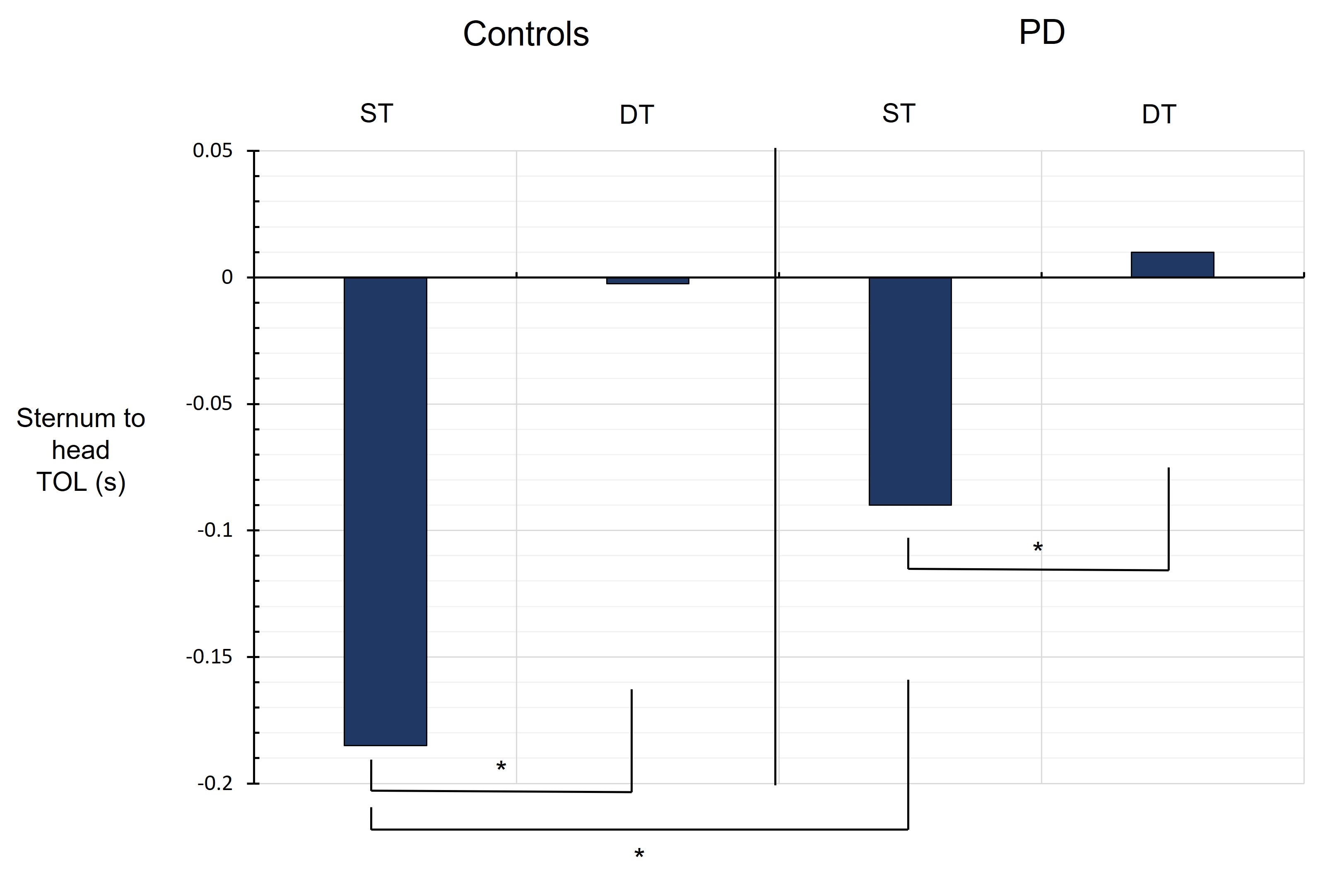Category: Technology
Objective: To investigate turning kinematics and intersegmental coordination in single (ST) and dual tasking (DT) in Parkinson’s Disease (PD) patients.
Background: Successful turning depends on correct intersegmental coordination. This means that the head starts with the movement, followed by trunk and feet, like a steel spring [1]. In PD, this intersegmental coordination is often affected, and the body segments turn en bloc, like a single piece of wood [2]. As gait and balance parameters in PD are affected by DT and turns are often a problem for PD patients [3,4], this study investigated intersegmental body coordination and kinematics during turning in ST and DT in PD patients.
Method: Twenty-two PD patients and 22 age- and sex-matched controls (CO) with inertial measurement units (IMUs) placed on head and sternum performed 3 walking tasks involving 180° turns: walking up and down a 5-meter distance alone and while performing a reaction time task and a numerical Stroop test (both smartphone-based). The following parameters were extracted: turn duration (TD), number of steps (NS), cadence, mean (MAV) and peak (PAV) angular velocity. Sternum turning onset latency (TOL) relative to head and the maximum angle between the two body segments (MA) were defined. Mixed ANOVAs with factors “time” and “group” were used to compare variables between ST and DT and between PD patients and CO.
Results: In DT compared to ST, TD and NS were larger, and MAV and PAV were smaller for both body segments in both groups. However, PD patients turned more slowly and with a lower PAV than CO. During ST, compared to CO, PD patients showed a more en bloc turning in terms of TOL. In both groups MA was smaller in DT compared to ST but no difference was found between the two groups. During DT, sternum started before head in PD patients, whereas the sequence is still preserved in CO [Figure 1].
Conclusion: PD patients turn more en bloc than controls in ST and loose intersegmental body coordination during DT conditions. These results could explain, at least partly, increased balance deficits and risk of falls during turning in PD.
References: [1] Hollands MA, Ziavra NV, Bronstein AM. A new paradigm to investigate the roles of head and eye movements in the coordination of whole-body movements. Experimental Brain Research. 2004;154(2):261-266.
[2] Crenna P, Carpinella I, Rabuffetti M, et al. The association between impaired turning and normal straight walking in Parkinson’s disease. Gait and Posture. 2007;26(2):172-178.
[3] Mirelman A, Bonato P, Camicioli R, et al. Gait impairments in Parkinson’s disease. Lancet Neurol. 2019;18(7):697-708.
[4] Raffegeau TE, Krehbiel LM, Kang N, et al. A meta-analysis: Parkinson’s disease and dual-task walking. Parkinsonism Relat Disord. 2019;62:28-35.
To cite this abstract in AMA style:
E. Bianchini, E. Warmerdam, R. Romijnders, J. Hoffmann, G. Schmidt, F. Pontieri, C. Hansen, W. Maetzler. Turning during single and dual tasking in Parkinson’s Disease [abstract]. Mov Disord. 2022; 37 (suppl 2). https://www.mdsabstracts.org/abstract/turning-during-single-and-dual-tasking-in-parkinsons-disease/. Accessed January 1, 2026.« Back to 2022 International Congress
MDS Abstracts - https://www.mdsabstracts.org/abstract/turning-during-single-and-dual-tasking-in-parkinsons-disease/

